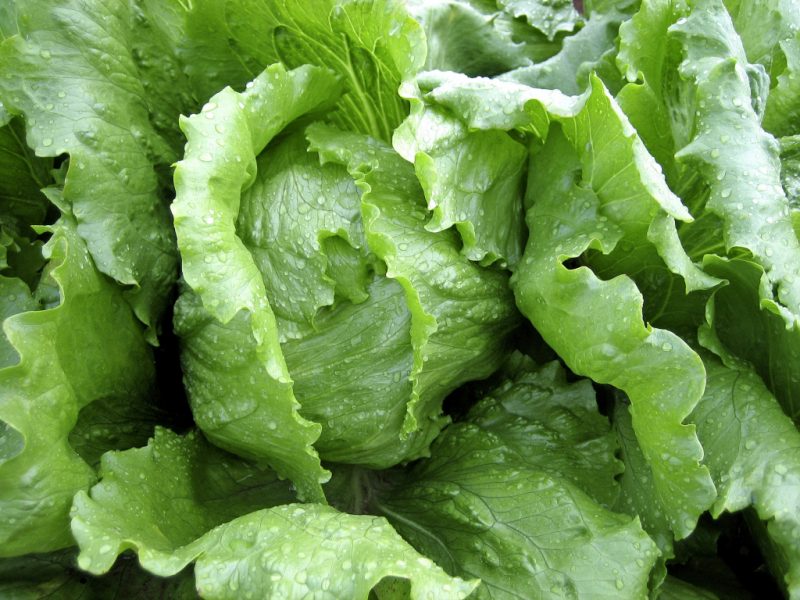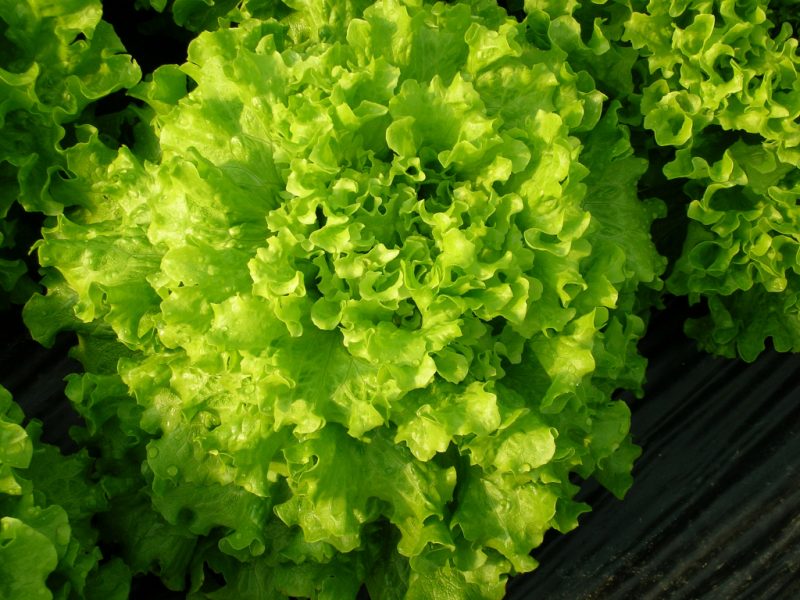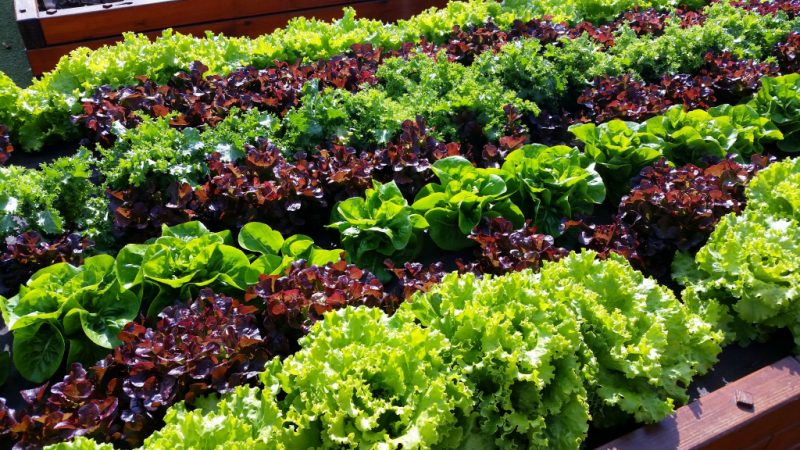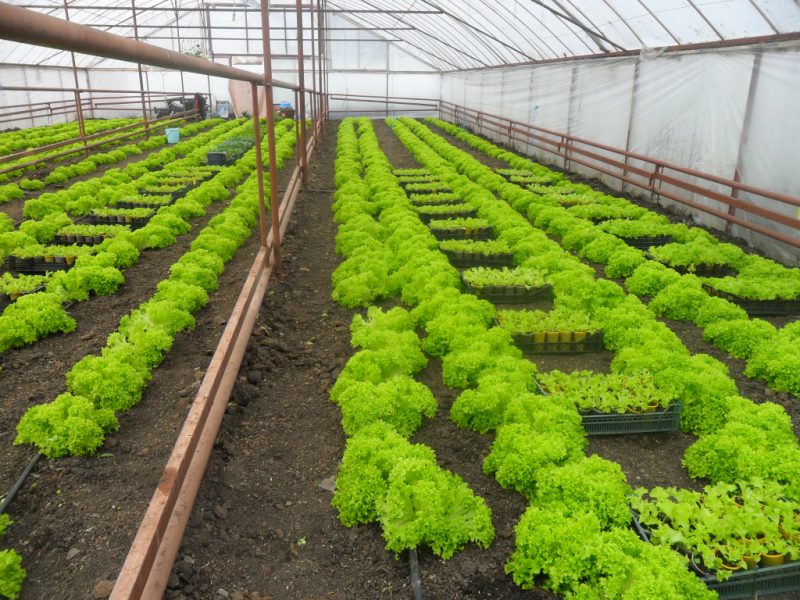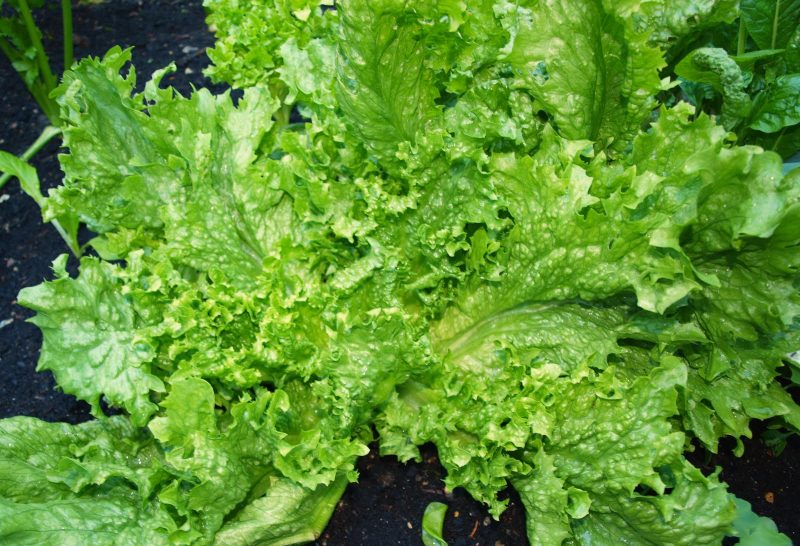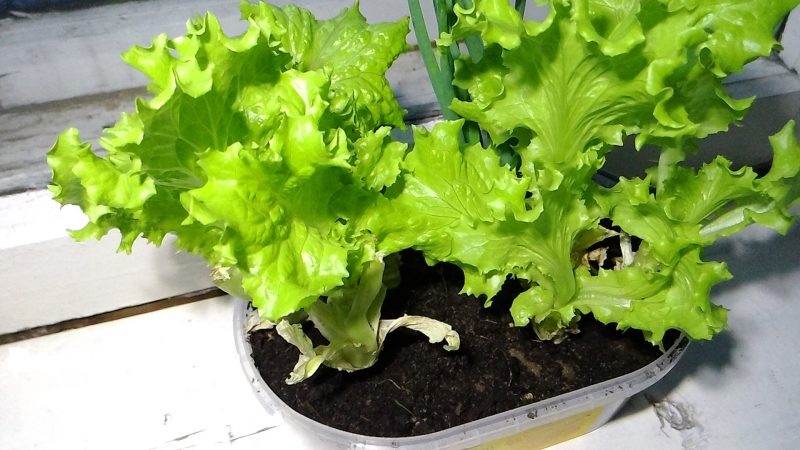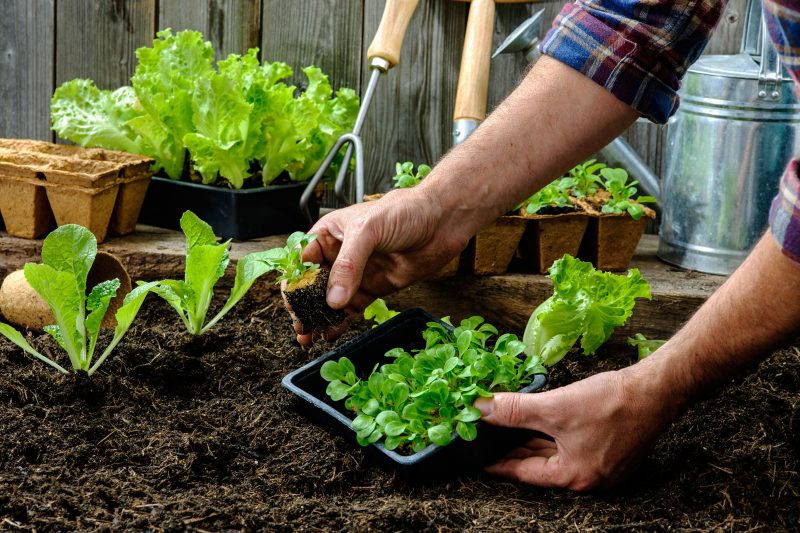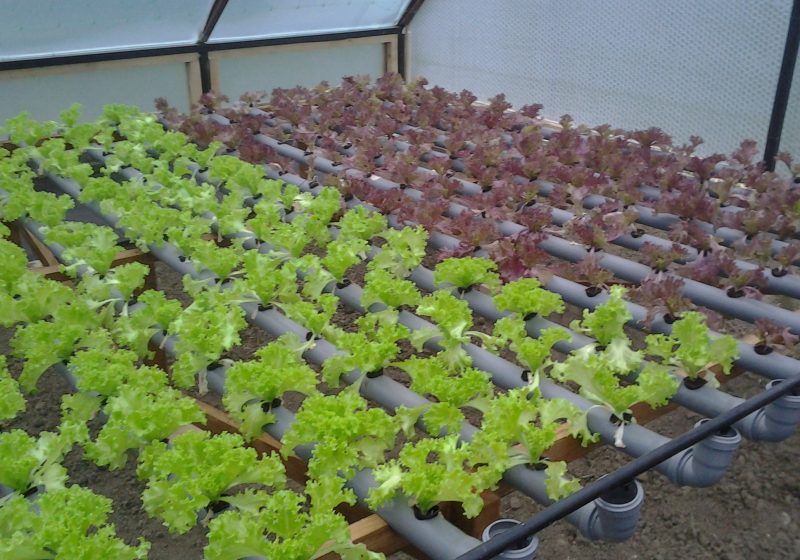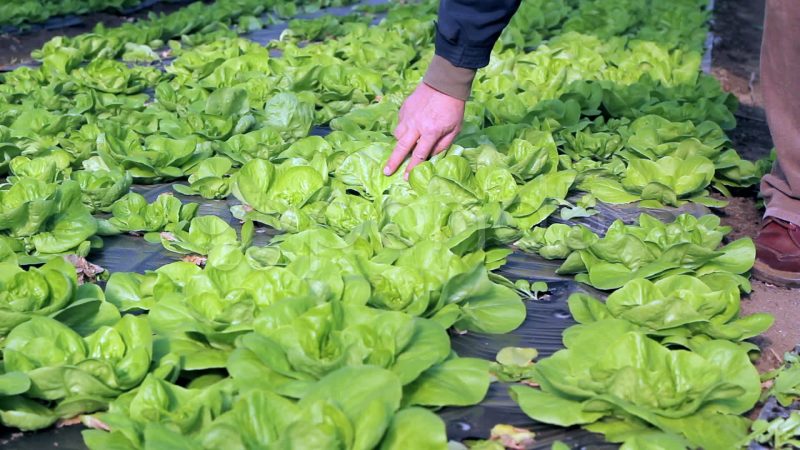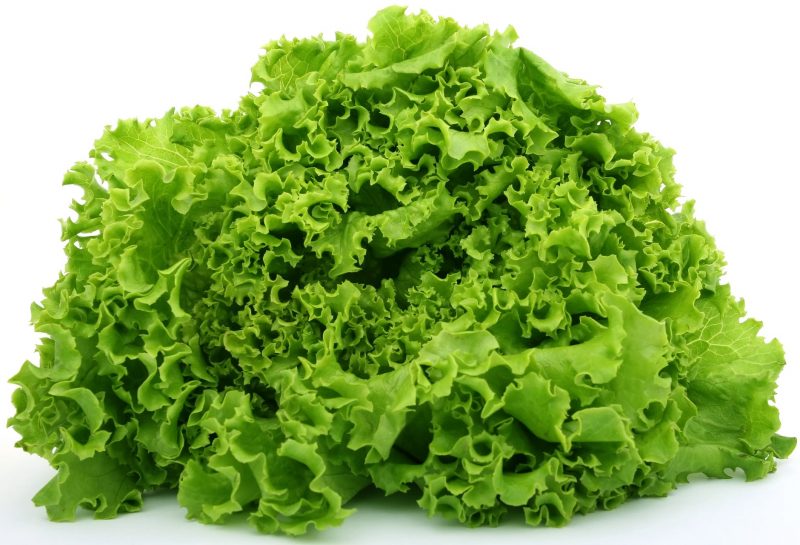In appearance, the iceberg salad is much like the heads of white cabbage. They are so similar that many confuse them. Heads taste like ordinary leaf lettuce, but differ from it in characteristic crunching.
The culture is early, its ripening period is only from 50 to 90 days. The rosette of light green leaves forms a fairly dense head of cabbage, which weighs about 300-600 g. The plant is popular around the world, and our summer residents are happy to sow it. In culture, icebergs have been grown since the twentieth century.
Salad got its name “iceberg” thanks to farmers who used an ice pillow to store it. Heads of cabbage were packed in boxes and sprinkled with pieces of ice. Ice in English sounds like ice. Later, the salad was called the iceberg.
Material Content:
Growing from seeds of iceberg lettuce in open ground
You can grow this incredibly healthy and tasty salad in your own area, knowing some secrets and subtleties.
Selection of a plot for sowing
To grow these plants, you first need to choose the right soil. The iceberg will grow well on fertilized lands. Before planting lettuce in the ground, any complex mineral fertilizers should be repaired. The iceberg likes soil moderately moist, not acidic.
This culture grows well in sunny areas, so the place for it should be selected illuminated, but closed from drafts.
Sowing lettuce seeds in open ground
In a small seed, there is a reserve of nutrients for the growth of the embryo. The larger the seeds, the more nutrients there will be.
Therefore, to obtain friendly seedlings, seeds are sorted by size.Deformed planting material, damaged should be discarded.
The bed for sowing the salad needs to be prepared in advance - dig, add organic matter, for example, rape and mineral fertilizers. Then the bed is tightened with a film so that the earth warms up. They have been preparing the site since the beginning of April.
When the positive temperature is established, closer to the end of April, they begin to sow the seeds in open ground. To do this, make beds with a depth of 3 cm, with a row spacing of about 40 cm. The earth is slightly compacted and shed well. Seeds are sown and then covered with a layer of soil 1 cm thick.
After sowing, the bed should be tightened with a film. The first shoots should appear after 6-14 days. After germination, the film is removed. The lower the air temperature, the longer it will take to wait for seedlings.
Sowing in the winter
Another option for planting lettuce is sowing before winter. Salad is sown late in the fall, which allows you to get a crop 10-15 days earlier. But in this case, the risk of freezing seeds is high, so their rate needs to be doubled.
When the air temperature drops to +3 degrees, seeds prepared in advance are planted according to the same agricultural technique as in the case of spring sowing. Seeds should be deepened by 1.5-2 cm. So the planting material will go under the winter, and will not germinate. The top bed should be covered with dry grass or foliage. Remove shelter with the arrival of the first warm days in the spring.
Growing Iceberg Lettuce - The Basics of Care
The main crop care consists in timely watering, loosening the soil and applying fertilizers.
Top dressing
It is enough to feed the iceberg only twice for the entire period of growth. The first time fertilizers are applied before sowing seeds. The second top dressing occurs during the formation of heads of cabbage. Experienced gardeners combine the second top dressing with watering. It is best to feed organic salad for the second time.
As fertilizers, mullein or bird droppings are perfect. It is enough to dilute 2 tbsp in 10 liters of water. l dry bird droppings or 300-500 g of mullein and pour each plant, spending about 500 ml of solution.
Watering
Plants like regular but moderate watering. You can water the salad every other day or pour it once a week.
If the soil is dry, heads of cabbage will form poorly. If the soil is excessively moist, rot may occur. After the formation of the ovaries, the iceberg is stopped watering.
Weeding
Weeding and loosening the salad should be superficial, since its root system is close to the surface. The first weeding is carried out approximately 3 weeks after sowing. Loosening also begins to be carried out after 3-4 weeks.
Thinning
If too thick shoots appear, thinning should be carried out. Thinning sprouts is carried out twice. If you do not perform these works, then heading out will form very poorly.
The first time the seedlings are thinned out at the stage of the appearance of the first true leaf. The shoots are left at a distance of 5 cm from each other.
When 6-7 true leaves appear on the sprouts, the plants should be thinned, leaving 20 cm between them.
It is interesting:edible honeysuckle
Diseases and Pests
Due to inappropriate weather conditions or a violation of agricultural cultivation techniques, iceberg lettuce can become sick. When fertilizing the culture with mineral fertilizers, too large doses of nitrogen should be avoided, and it is also necessary to treat the plants with boron before heading out according to the instructions.
Powdery mildew, which manifests itself in the appearance of spots, can affect this culture. Be sure to alternate crops on the site. Affected leaves need to be cut off. After harvesting, the remains of plants need to be burned.
Iceberg lettuce is very fond of aphids, which can be combated by treating plants with folk remedies. Since young leaves come for food, it is better to try to get rid of insects by treating plants with infusion of onion husks. To prepare the infusion, 200 g of husk is thrown into a bucket of water and insisted for a day.Helps to get rid of insects and infusion of potato tops, for the preparation of which 400 g of botany per day insist in a bucket of water.
Also, slugs and salad flies can harm lettuce leaves. Flies begin to fly in the second decade of June. Female insects lay eggs between the flowers of plants. The appeared larvae go to the ground, where they winter. It is necessary to deal with salad flies by spraying plants with phosphamide at a concentration of 0.2%. in the garden where the lettuce grew in autumn, deep plowing should be carried out. The slugs are harvested by hand early in the morning.
Why does the salad not head out?
The main and most common reason why heading is not occurring is a thickened landing and reluctance to thin out.
The next reason there is no crop is poor soil. Iceberg loves fertile soil, which is rich in organic matter. If the plot has depleted land, then organic matter can be repaired since the fall.
Another reason is the shadow. If the salad is planted in the shade, it will not give a head of cabbage.
Harvesting
When the mass of heads of cabbage reaches about 300-500 g, they can be cut. Heads of cabbage should be relatively loose, not have brown veins.
Collect icebergs in the early morning. Before processing, they are placed in wooden boxes. Each head of cabbage is carefully cut with a knife and a couple of outer leaves are cut off from it. It is impossible to compress the crop in boxes.
It is advisable to immediately place the harvest in a cellar or cellar. The optimum temperature for storage of salad is +1 degree.
Iceberg lettuce is one of the few varieties that is stored for a long time in a household refrigerator, without losing its taste and characteristic crunch, while preserving all the vitamins. On average, iceberg lettuce is stored at low temperatures for about a week.


